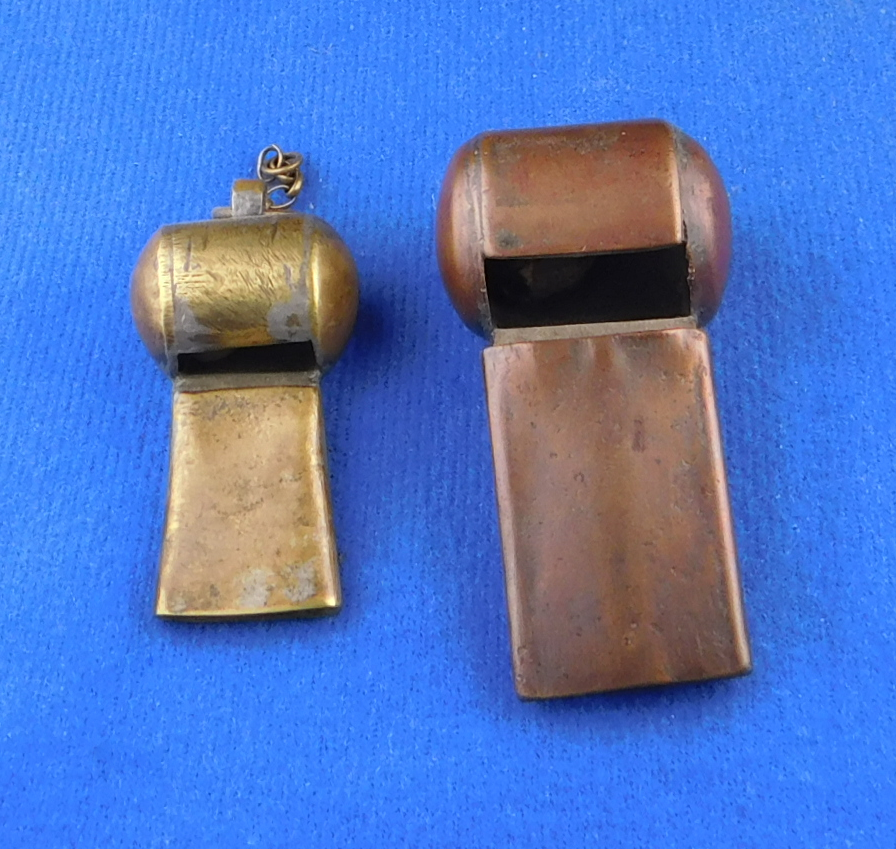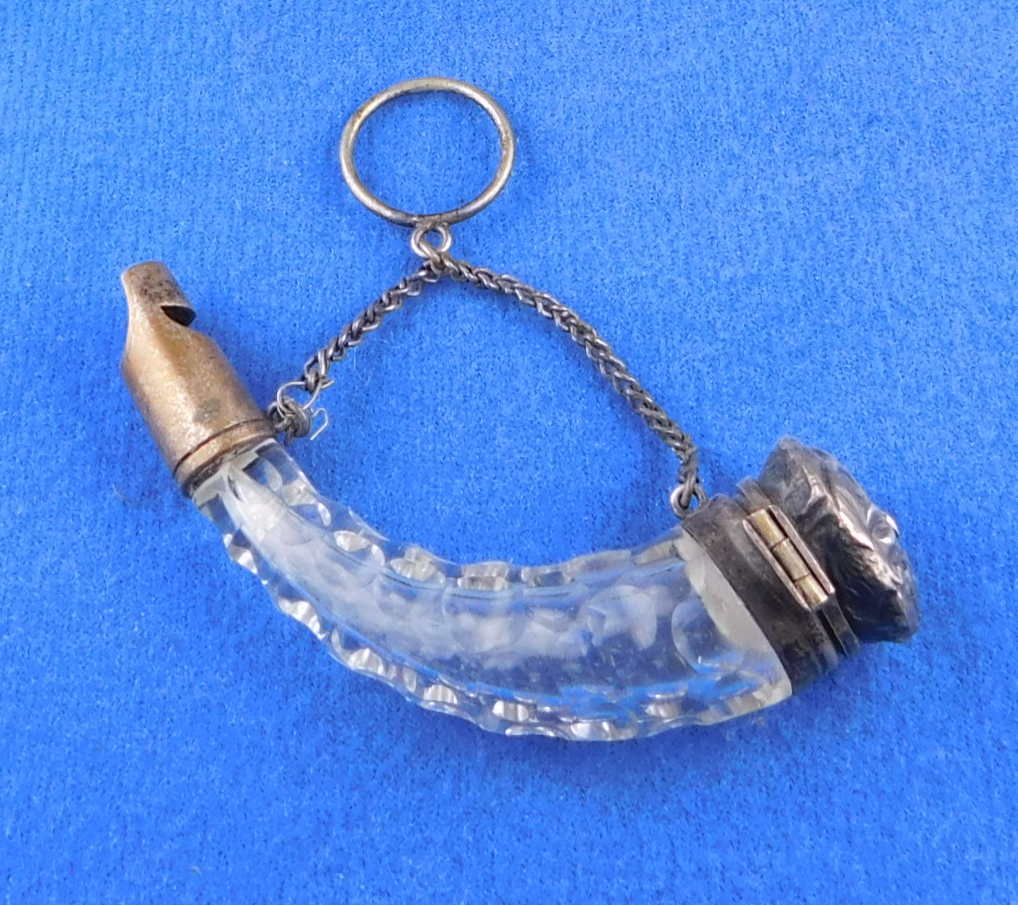Spotlight > 105
Whistory:
An interesting group of only three whistles found in the USA, is this match of a tube shaped whistle, siren and escargot whistle. There are notable manufacturing similarities between them that declare them to be made by the same manufacturer, although unknown. They all appear to be circa 1910.
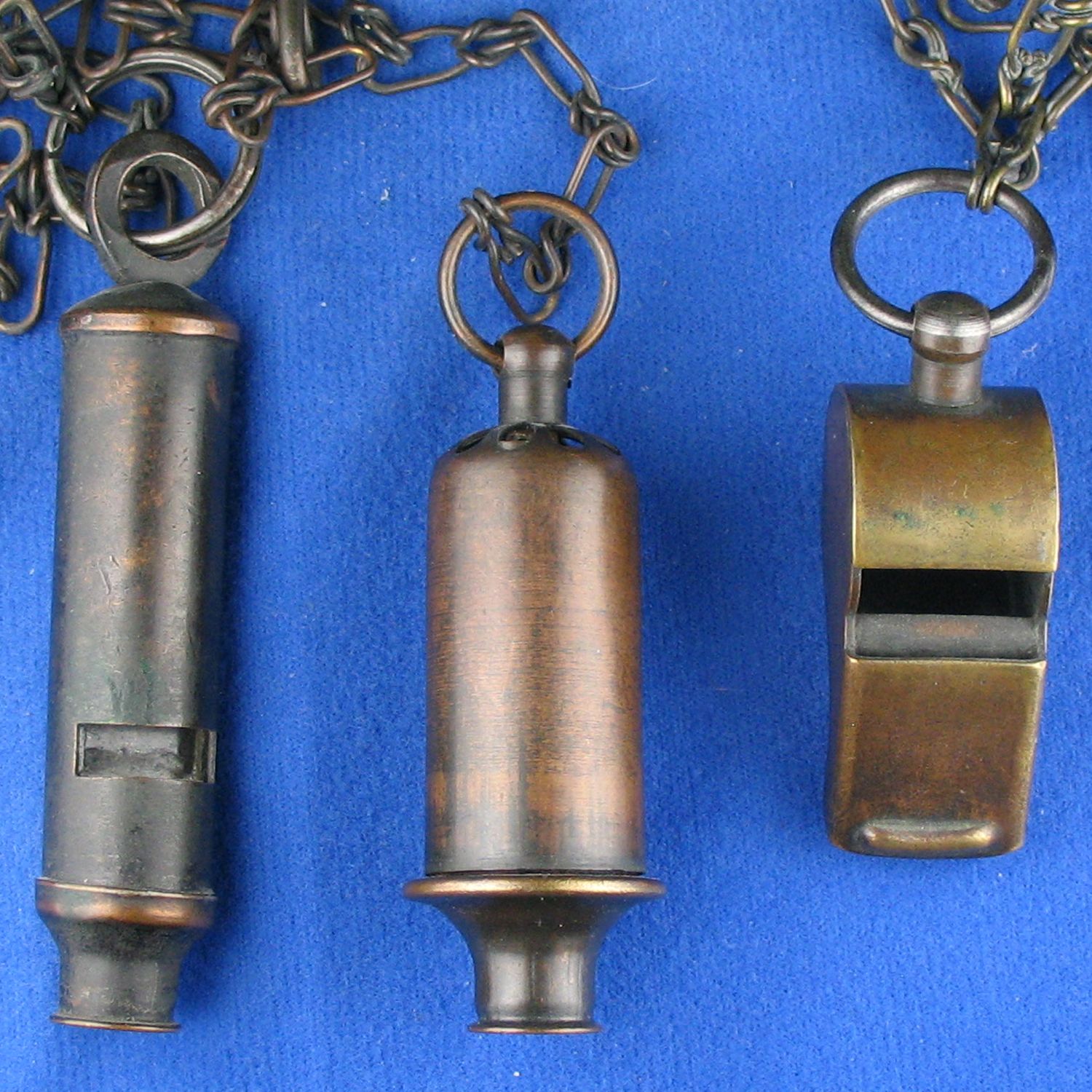
To date none have been seen with a stamp on any of the three. All have features that set them apart from all other manufacturers. It has been speculated that Horstmann manufactured them. However there are enough differences to set them apart, at least till some substantial evidence surfaces showing otherwise.
Some speculation also has been offered that the sirens are French made, however all of the sirens found so far by the Whistle Gallery, have emanated from the USA, none from France and no known catalogues or ads showing these.
Whistology:
Significant differences are found with this trifecta as follows:
Steel knops ( escargot, siren )
unique aluminum wheels ( siren )
thin flared mouthpiece ( tube, siren )
top cap ( tube )
length of tubes ( tube )
body seam ( tube )
uni-link chains ( all three )
copper material ( siren, tube )
flat tongue opening ( escargot )
cylinder cork ‘pea’ ( escargot )
As a rule, very few escargots have been found with a steel knop, it is an uncommon metal to be used in whistle manufacturing. This escargot and siren were typically manufactured with them. They have straight sides at the attachment point which continue up into a rounded top that create definitive features.
The vents of the siren display a ‘floral’ design with rounded cuts which are distinctive.
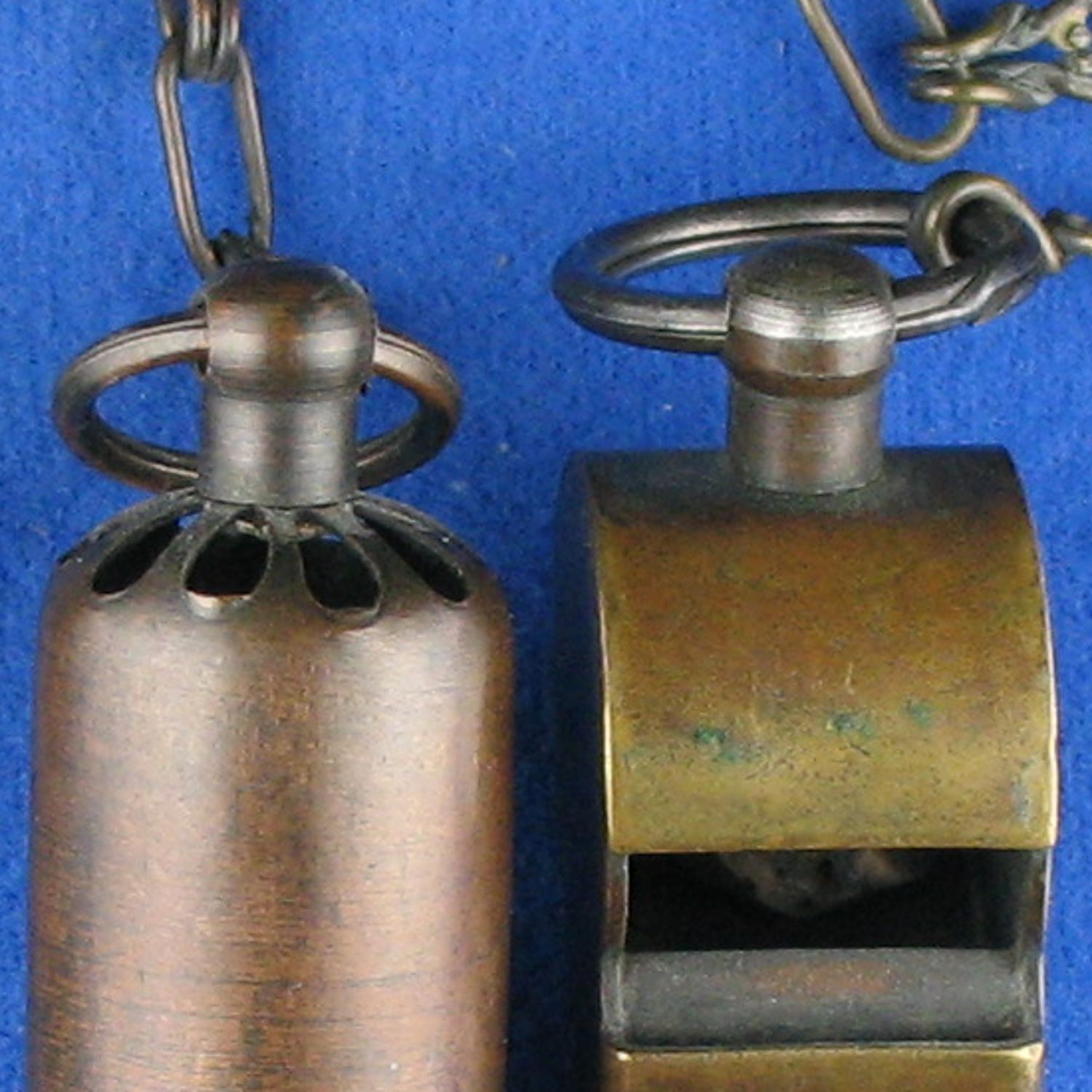
The wheel inside the siren is also unique in design and material. It is fully rounded rather than open ended as in one other maker’s aluminum wheel.
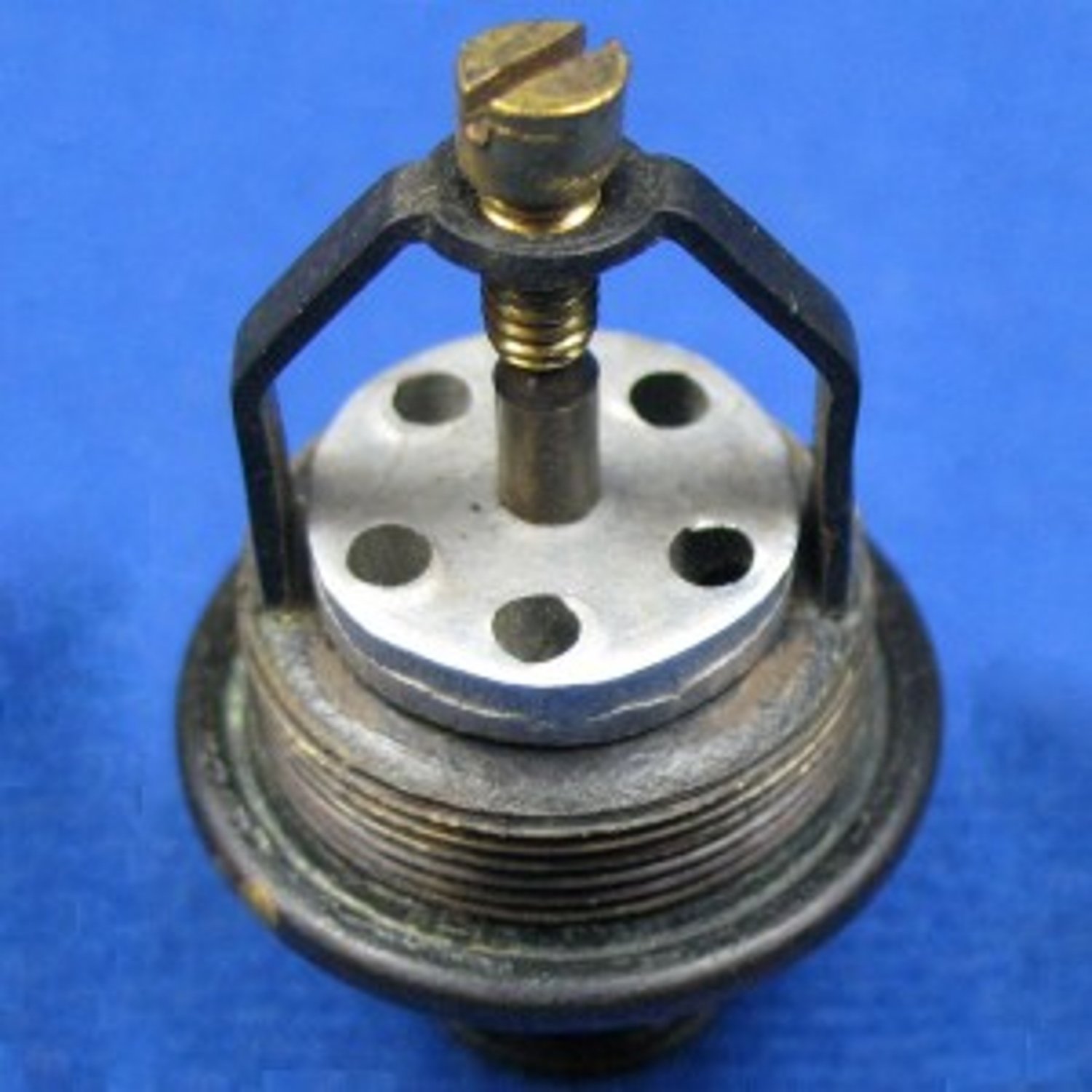
The top cap wraps over the top of the tube, distinct from most other manufacturers and especially Horstmann’ s sharp edge. In these two the top ring is similar in that it appears punched or pressed out like Horstmann, however rarely is it off center like Horstmann.
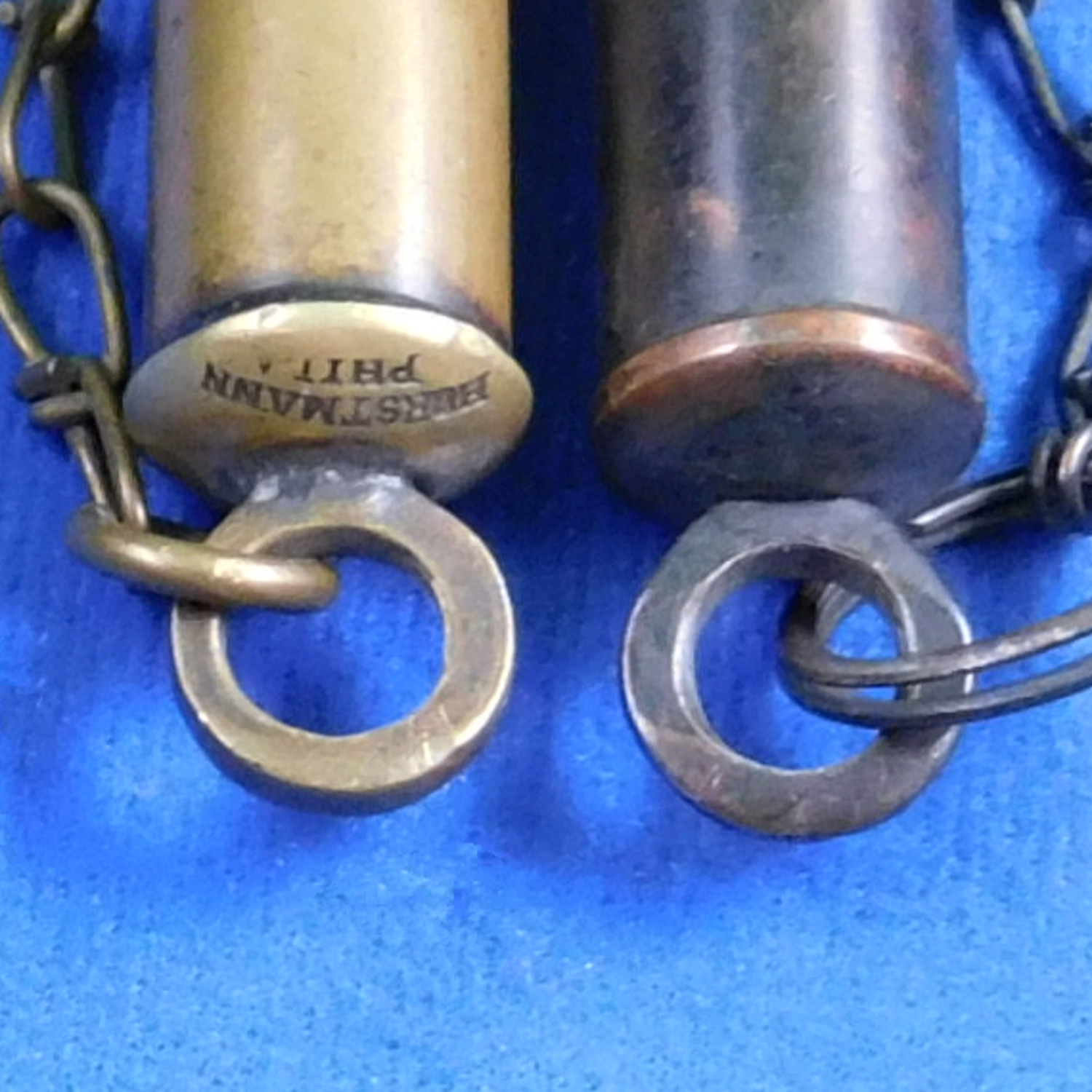
A further distinction is the mouth opening on this particular manufacturer’s siren and tube whistles,
It is flared to a very thin edge. So often it is machined and then ‘rolled’ inside ( into ) the opening —rather than flared outwards. This also is unique and an identifying mark for this manufacturer.
The length of the tube whistle is 2 mm longer than Horstmann which is already a longer than usual tube whistles from the USA.
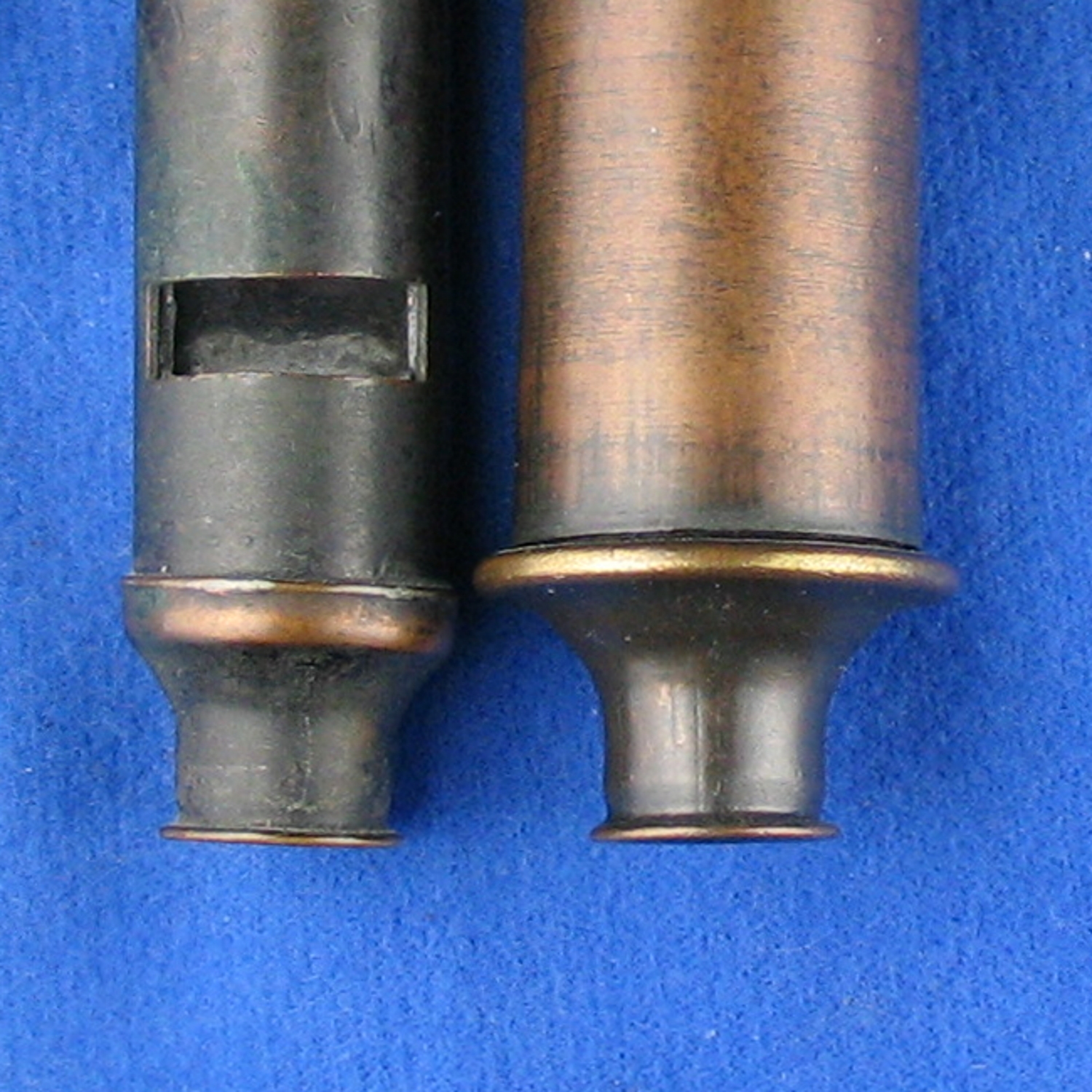
The body seam is random, whilst the seam through Horstmann is typically midway through the body. This one is on the window edge.
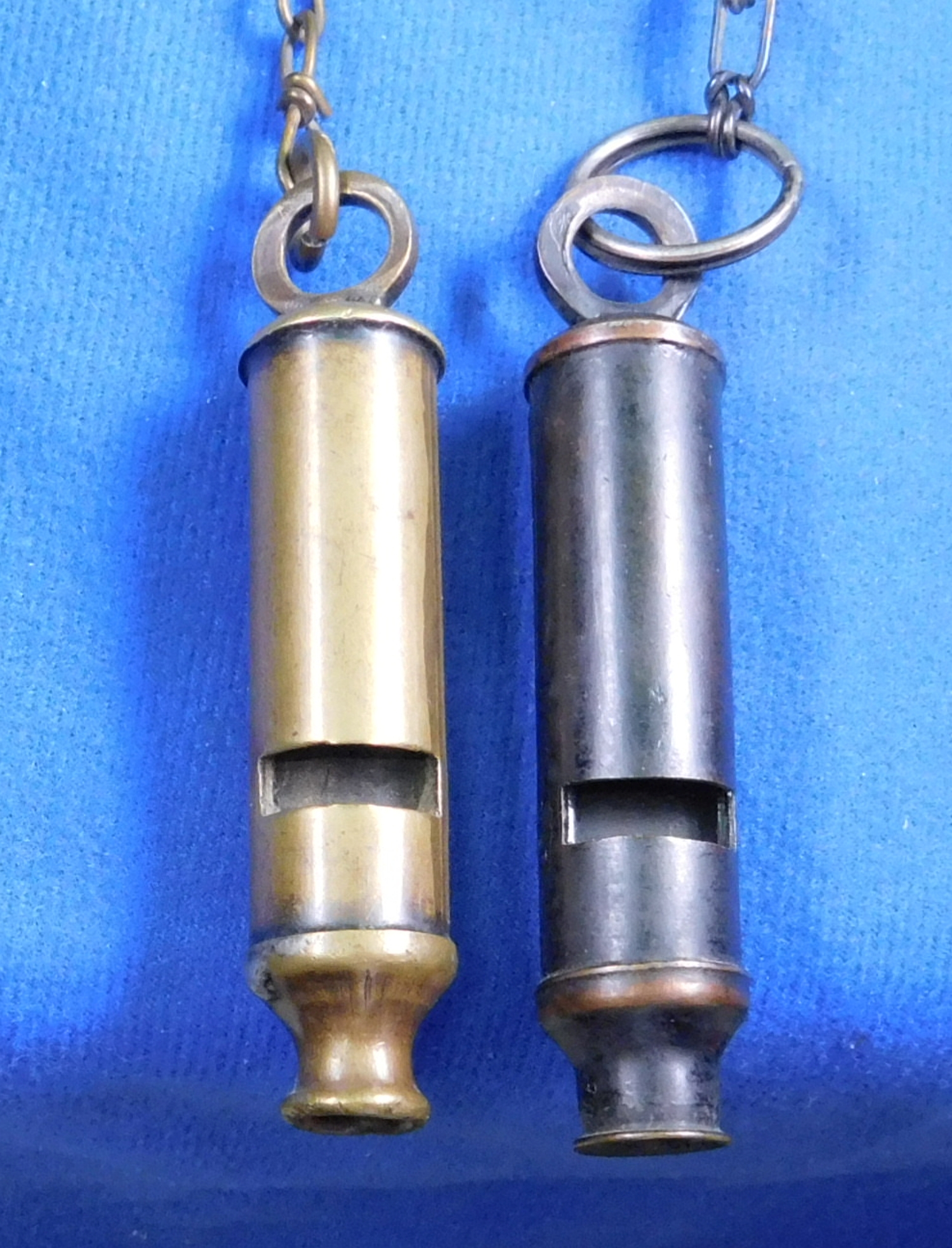
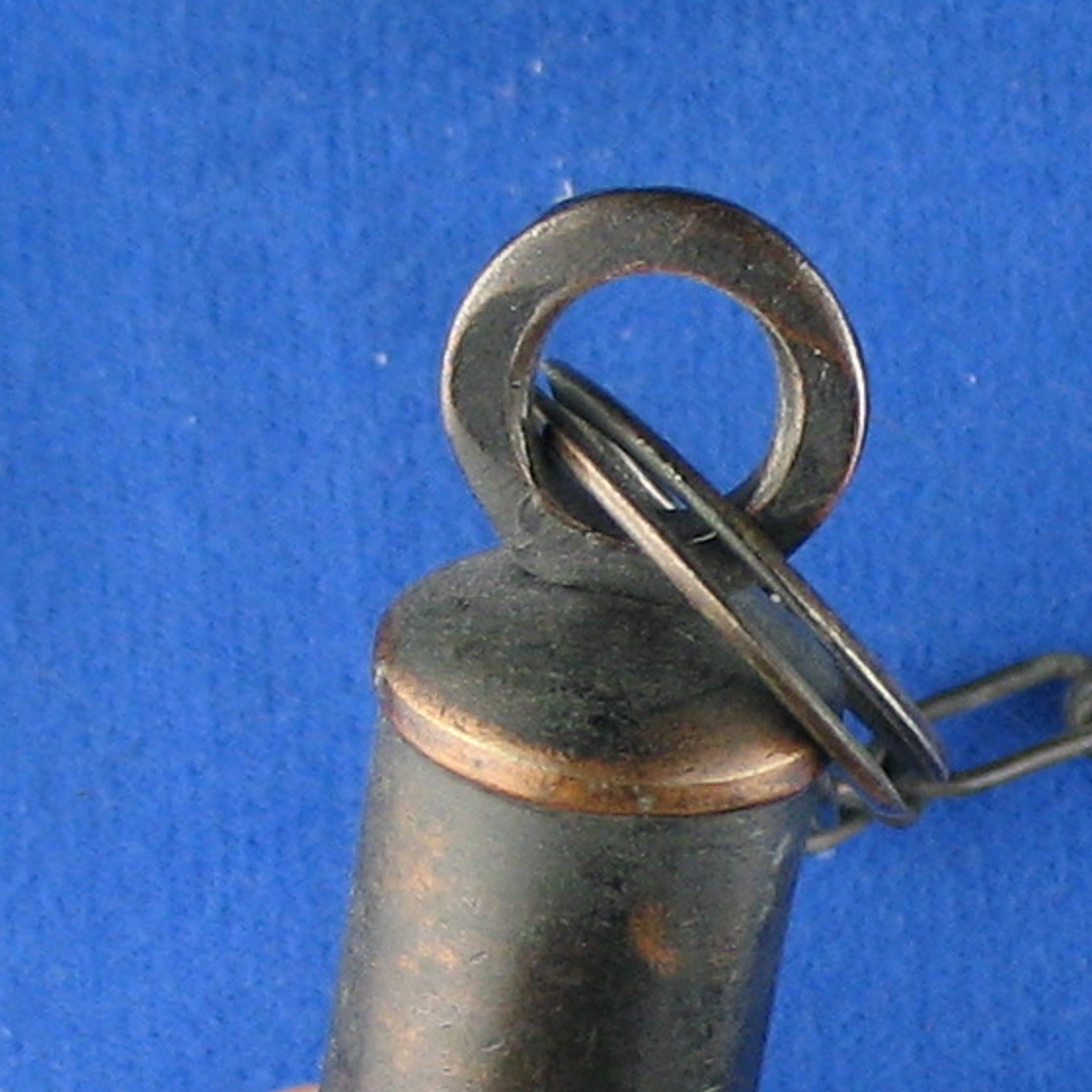
Continuing on, the chains are indicative of a separation of manufacturing. Typically Horstmann utilized an A.V. link similarly found in the UK, whereas this manufacturer used a UNI-link end wrap chain, distinct to the USA.
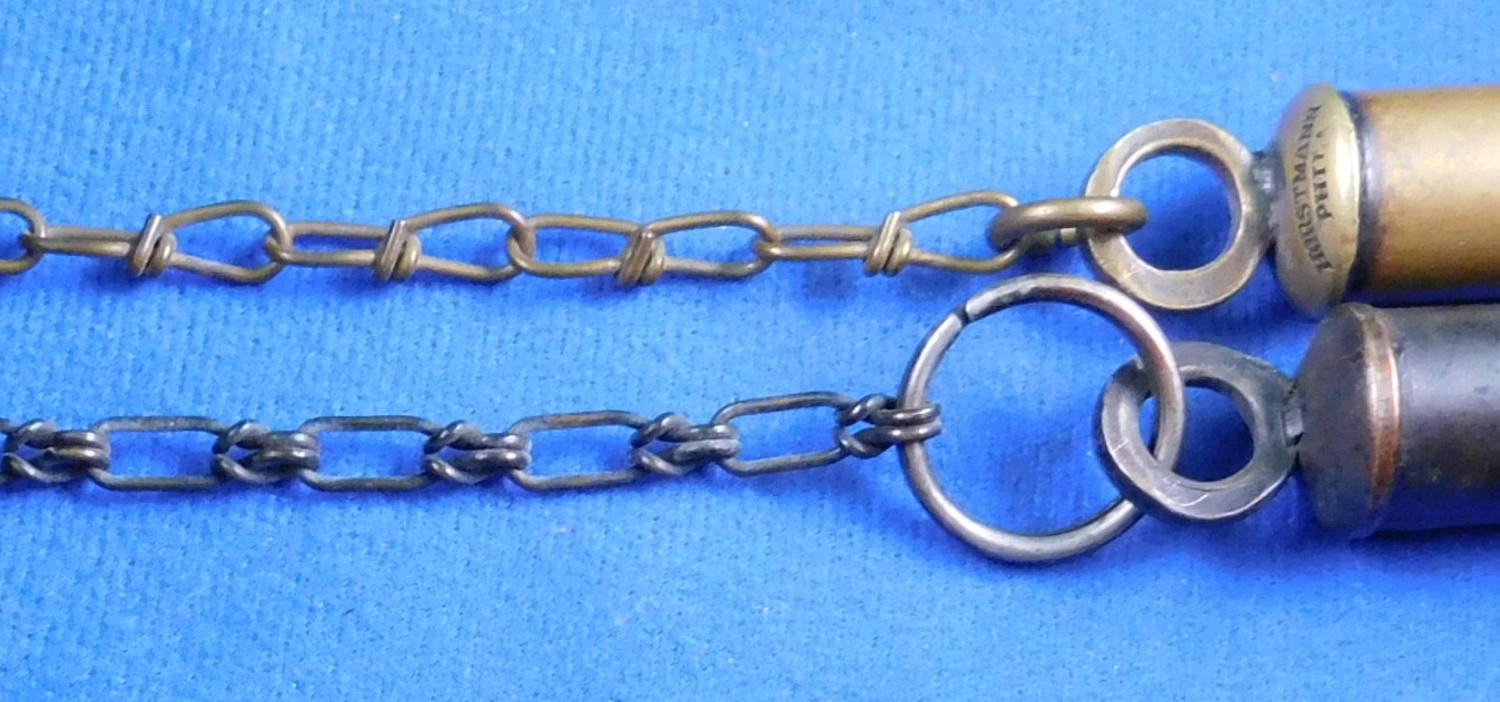
Interestingly, copper material was used in making the tube whistle, including the chain, split ring and hook although subject to corrosion and verdigris. It appears that the siren is can be ( but not always ) the same. This is a departure from typical materials and was not used in the their escargot whistles either, although ( rarely ) can be found in Horstmann escargots.
In the escargot we find that the tongue is flat, unlike Horstmann with the raised center, similar to B&R escargots of the same time, but not as radical, another separation of manufacturing methods.
Lastly we mention the, not unique, but notable to find a large ‘cylinder’ cork ‘pea’.
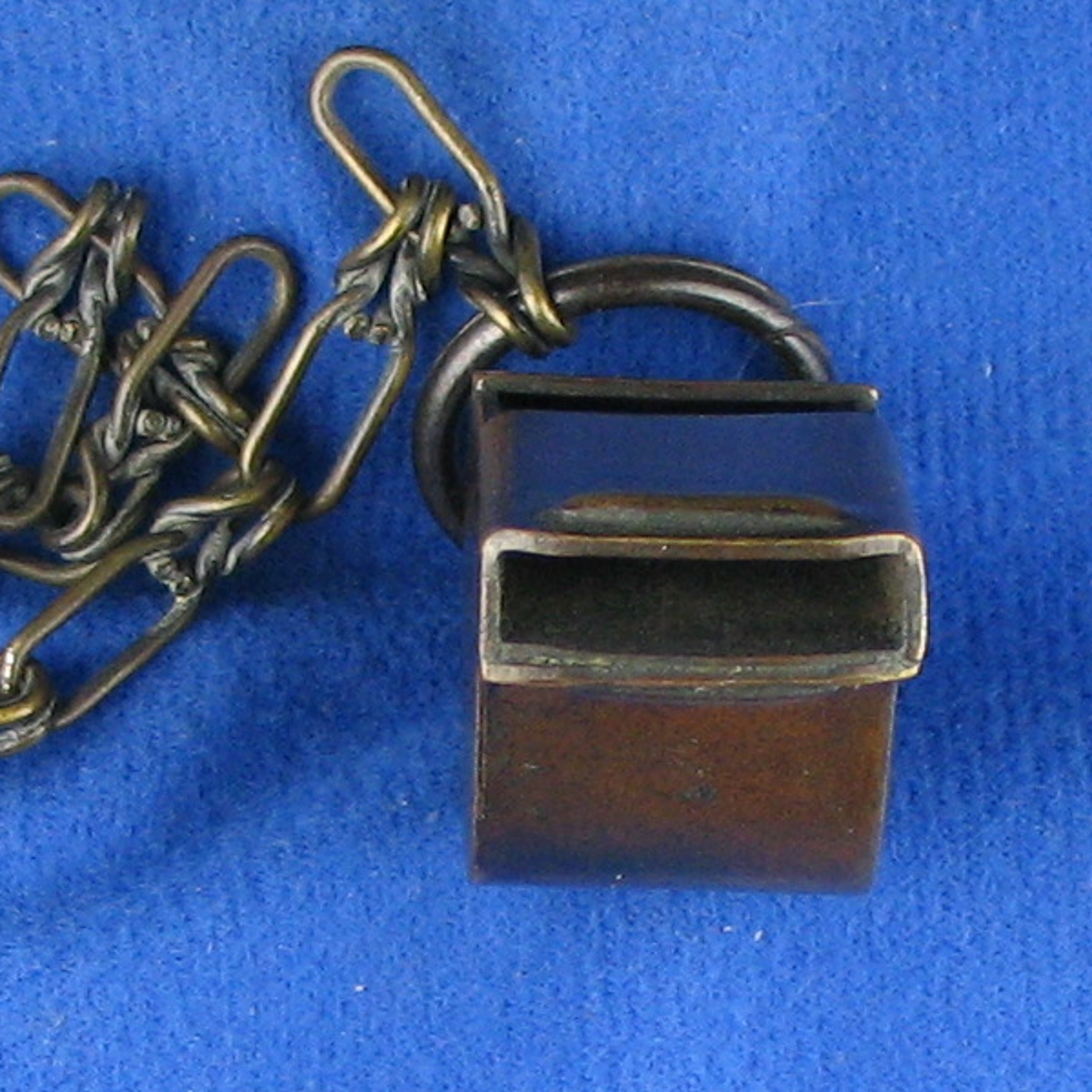
As always, we invite information you may have found to be true. If so, perhaps pictures and data can be submitted, so that we can update this article.
TWG
Posted October 5, 2019
